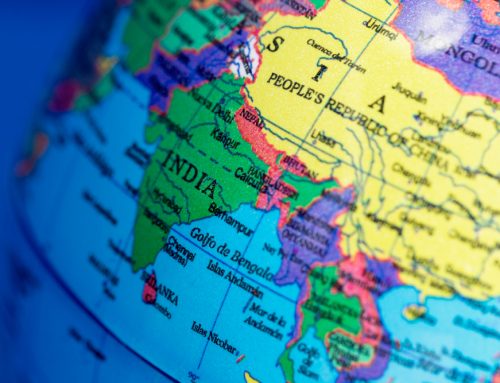January 13, 2023
WEF The Global Risks Report 2022 17th Edition
As 2022 begins, COVID-19 and its economic and societal consequences continue to pose a critical threat to the world. Vaccine inequality and a resultant uneven economic recovery risk compounding social fractures and geopolitical tensions. In the poorest 52 countries— home to 20% of the world’s people—only 6% of the population had been vaccinated at the time of writing. By
2024, developing economies (excluding China) will have fallen 5.5% below their pre-pandemic expected GDP growth, while advanced economies will have surpassed it by 0.9%—widening the global income gap. The resulting global divergence will create tensions— within and across borders—that risk worsening the pandemic’s cascading impacts and complicating the coordination needed to tackle common challenges including strengthening climate action, enhancing digital safety, restoring livelihoods and societal cohesion and managing competition in space.
The Global Risks Report 2022 presents the results of the latest Global Risks Perception Survey (GRPS), followed by an analysis of key risks emanating from current economic, societal, environmental and technological tensions. The report concludes with reflections on enhancing resilience, drawing from the lessons of the last two years of the COVID-19 pandemic. The key findings of the survey and the analysis are summarized below.
Global risks perceptions highlight societal and environmental concerns Asked to take a view of the past two years, respondents to the GRPS perceive societal risks—in the form of “social cohesion erosion”, “livelihood crises” and “mental health deterioration”—as those that have worsened the most since the pandemic began. Only 16% of respondents feel positive and optimistic
about the outlook for the world, and just 11% believe the global recovery will accelerate. Most respondents instead expect the next three years to be characterized by either consistent volatility and multiple surprises or fractured trajectories that will separate relative winners and losers.
For the next five years, respondents again signal societal and environmental risks as the most concerning. However, over a 10-year horizon, the health of the planet dominates concerns:
environmental risks are perceived to be the five most critical long-term threats to the world as well as the most potentially damaging to people and planet, with “climate action failure”, “extreme weather”, and “biodiversity loss” ranking as the top three most severe risks. Respondents also signalled “debt crises” and “geoeconomic confrontations” as among the most severe risks over the next 10 years. Technological risks—such as “digital inequality” and “cybersecurity failure”—are other critical short- and medium-term threats to the world according to GRPS respondents, but these fall back in the rankings towards the long term and none appear among the most potentially severe, signalling a possible blind spot in risk perceptions.
The 2021-2022 GRPS included a question on international risk mitigation efforts. “Artificial intelligence”, “space exploitation”, “cross-border cyberattacks and misinformation” and “migration and refugees” are the areas where most respondents believe the current state of risk mitigation efforts fall short of the challenge—that is, efforts are “not started” or in “early development”. Meanwhile, for “trade facilitation”, “international crime” and “weapons of mass destruction”, large majorities perceived risk mitigation efforts to be “established” or “effective”.
A divergent economic recovery threatens collaboration on global challenges
Economic challenges flowing from the pandemic persist. The outlook remains weak: at the time of writing, the global economy was expected to be 2.3% smaller by 2024 than it would have been
without the pandemic. Rising commodity prices, inflation and debt are emerging risks. Moreover, with another spike in COVID-19 cases towards the end of 2021, the pandemic continues to stifle countries’ ability to facilitate a sustained recovery.
The economic fallout from the pandemic is compounding with labour market imbalances, protectionism, and widening digital, education and skills gaps that risk splitting the world into divergent trajectories. In some countries, rapid vaccine rollout, successful digital transformations and new growth opportunities could mean a return to pre-pandemic trends in the short term
and the possibility of a more resilient outlook over a longer horizon. Yet many other countries will be held back by low rates of vaccination, continued acute stress on health systems, digital divides and stagnant job markets. These divergences will complicate the international collaboration needed to address the worsening impacts of climate change, manage migration flows and combat dangerous cyber-risks.
Short-term domestic pressures will make it harder for governments to focus on long-term priorities and will limit the political capital allocated to global concerns. “Social cohesion erosion” is a top short-term threat in 31 countries—including Argentina, France, Germany, Mexico and South Africa from the G20. Disparities that were already challenging societies are now expected to
widen—51 million more people are projected to live in extreme poverty compared to the pre-pandemic trend— at the risk of increasing polarization and resentment within societies. At the same time, domestic pressures risk stronger national interest postures and worsening fractures in the global economy that will come at the expense of foreign aid and cooperation.
A disorderly climate transition will exacerbate inequalities Respondents to the GRPS rank “climate action failure” as the number one long-term threat to the world and the risk with potentially the most severe impacts over the next decade. Climate change is already manifesting rapidly in the form of droughts, fires, floods, resource scarcity and species loss, among other impacts. In
2020, multiple cities around the world experienced extreme temperatures not seen for years—such as a record high of 42.7°C in Madrid and a 72-year low of -19°C in Dallas, and regions like the Arctic Circle have averaged summer temperatures 10°C higher than in prior years. Governments, businesses and societies are facing increasing pressure to thwart the worst consequences. Yet a disorderly climate transition characterized by divergent trajectories worldwide and across sectors will further drive apart countries and bifurcate societies, creating barriers to cooperation
Growing digital dependency will intensify cyberthreats
Growing dependency on digital systems—intensified by COVID-19—has altered societies. Over the last 18 months, industries have undergone rapid digitalization, workers have shifted to remote working where possible, and platforms and devices facilitating this change have proliferated. At the same time, cybersecurity threats are growing—in 2020, malware and ransomware attacks
increased by 358% and 435% respectively—and are outpacing societies’ ability to effectively prevent or respond to them. Lower barriers to entry for cyberthreat actors, more aggressive attack methods, a dearth of cybersecurity professionals and patchwork governance mechanisms are all aggravating the risk.
Barriers to mobility risk compounding global insecurity
Growing insecurity resulting from economic hardship, intensifying impacts of climate change and political instability are already forcing millions to leave their homes in search of a better future abroad. “Involuntary migration” is a top long-term concern for GRPS respondents, while 60% of them see “migration and refugees” as an area where international mitigation efforts
have “not started” or are in “early development”. In 2020, there were over 34 million people displaced abroad globally from conflict alone—a historical high. However, in many countries, the lingering effects of the pandemic, increased economic protectionism and new labour market dynamics are resulting in higher barriers to entry for migrants who might seek opportunity or refuge.

Source: World Economic Forum – Global Risks Report
Legal Notice: The information in this article is intended for information purposes only. It is not intended for professional information purposes specific to a person or an institution. Every institution has different requirements because of its own circumstances even though they bear a resemblance to each other. Consequently, it is your interest to consult on an expert before taking a decision based on information stated in this article and putting into practice. Neither Karen Audit nor related person or institutions are not responsible for any damages or losses that might occur in consequence of the use of the information in this article by private or formal, real or legal person and institutions.






